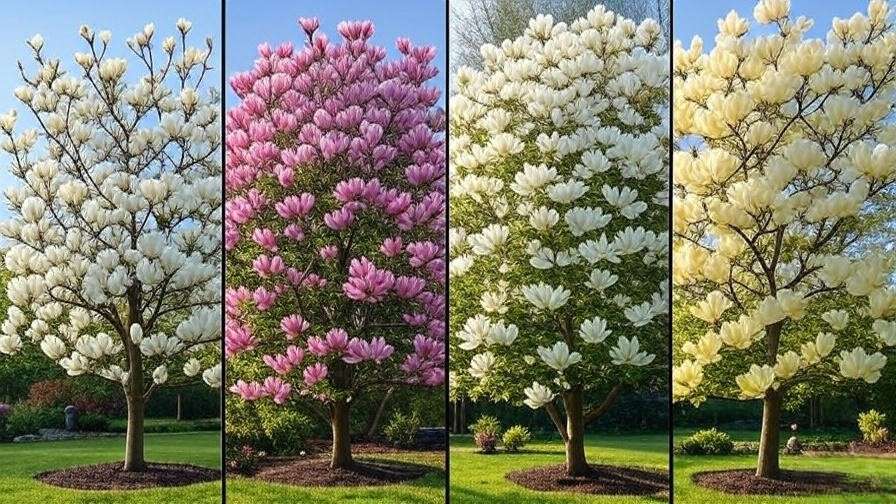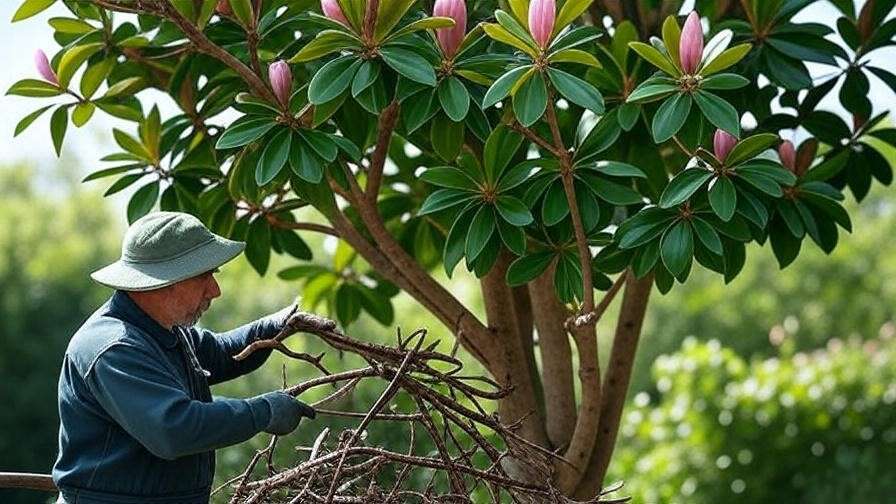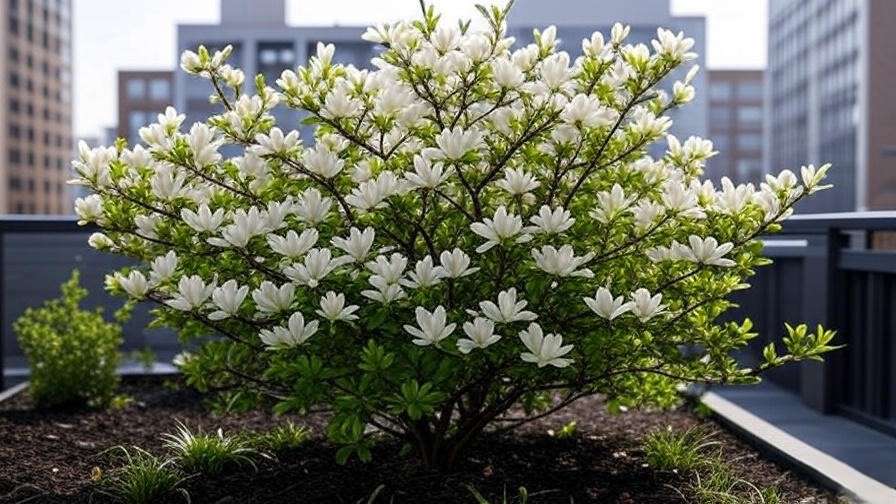How Fast Do Magnolias Grow? Your Complete Magnolia Tree Growth Rate Guide 🌸
Introduction 🌿
Imagine a garden bursting with the creamy, fragrant blooms of a magnolia tree, its glossy leaves swaying gently in the breeze. These iconic trees are a favorite for homeowners and landscapers alike, but one question often lingers: How fast do magnolias grow? Understanding the magnolia tree growth rate is key to planning your landscape, ensuring your tree thrives, and avoiding surprises years down the line. Whether you’re dreaming of a towering Southern magnolia or a petite star magnolia, knowing their growth patterns helps you make informed decisions.
In this comprehensive guide, we’ll dive deep into everything you need to know about magnolia tree growth rates. Backed by insights from horticulturists, university research, and years of hands-on gardening experience, this article answers your questions with clarity and authority. From species-specific growth rates to expert care tips, we’ll equip you to nurture your magnolia for stunning results. Let’s explore how these majestic trees grow and how you can help them flourish! 🌳
What Is a Magnolia Tree? A Quick Overview 🌳
Defining the Magnolia Family
Magnolia trees, belonging to the Magnoliaceae family, are celebrated for their striking beauty and versatility. With over 200 species, they range from towering evergreens like the Southern magnolia (Magnolia grandiflora) to compact deciduous varieties like the star magnolia (Magnolia stellata). Native to Asia and the Americas, magnolias are prized for their large, fragrant flowers—often white, pink, or purple—and glossy, lush foliage. Whether you’re planting for shade, aesthetics, or privacy, these trees add timeless elegance to any garden.
Why Growth Rate Matters
Understanding the magnolia tree growth rate is essential for gardeners and landscapers. A tree’s growth rate determines how quickly it will provide shade, fill a space, or reach its full ornamental potential. For example, a fast-growing magnolia might suit a spacious backyard, while a slower-growing variety is ideal for small gardens. Knowing what to expect helps you plan for spacing, maintenance, and long-term care, ensuring your magnolia thrives without overcrowding or excessive upkeep.
How Fast Do Magnolia Trees Grow? 🌱
Average Magnolia Tree Growth Rate
Most magnolia trees grow at a moderate pace, adding 1–2 feet per year under optimal conditions. However, this rate varies depending on the species, climate, soil, and care practices. While some magnolias, like the sweetbay (Magnolia virginiana), can approach faster growth in ideal settings, others, like the star magnolia, grow more slowly. Understanding these differences helps you choose the right tree for your timeline and garden goals.
Growth Rates by Magnolia Species
Different magnolia species have unique growth rates and mature sizes. Here’s a breakdown of popular varieties:
- Southern Magnolia (Magnolia grandiflora): This evergreen giant grows 1–2 feet per year, reaching 60–80 feet at maturity. Its slow-to-moderate pace makes it a long-term investment for large landscapes.
- Saucer Magnolia (Magnolia × soulangeana): Known for its vibrant blooms, this deciduous tree grows 1–1.5 feet per year, maturing at 20–30 feet. It’s faster in its youth, slowing as it ages.
- Star Magnolia (Magnolia stellata): A compact, slow-growing variety, it adds 0.5–1 foot per year and tops out at 15–20 feet, perfect for small gardens.
- Sweetbay Magnolia (Magnolia virginiana): This adaptable species grows 1–2 feet per year in wetter climates, reaching 20–50 feet depending on conditions.

| Species | Growth Rate (per year) | Mature Height |
|---|---|---|
| Southern Magnolia | 1–2 feet | 60–80 feet |
| Saucer Magnolia | 1–1.5 feet | 20–30 feet |
| Star Magnolia | 0.5–1 foot | 15–20 feet |
| Sweetbay Magnolia | 1–2 feet | 20–50 feet |
Factors Influencing Magnolia Growth Rates
Several factors impact how quickly a magnolia tree grows:
- Soil Quality: Magnolias prefer well-drained, slightly acidic soil (pH 5.5–6.5). Poor drainage or compacted soil can stunt growth.
- Climate and Hardiness Zones: Most magnolias thrive in USDA zones 4–9, with growth rates slowing in colder or overly dry climates.
- Sunlight: Full sun to partial shade promotes optimal growth; too much shade can slow development.
- Water and Nutrients: Consistent moisture and balanced fertilization are critical, especially for young trees.
Stages of Magnolia Tree Growth 🌼
Seedling and Juvenile Phase (Years 0–5)
In their first five years, magnolia trees focus on establishing strong root systems. Growth above ground is often slow, with 0.5–1 foot of height gain annually. During this phase:
- Watering: Keep soil consistently moist but not waterlogged.
- Mulching: Apply 2–3 inches of organic mulch (e.g., wood chips) to retain moisture and regulate soil temperature.
- Protection: Shield young trees from extreme weather, such as frost or intense heat, to prevent stress.
Tip: Avoid disturbing the root zone during this phase, as magnolias are sensitive to transplanting.

Adolescent Phase (Years 5–10)
As magnolias enter their adolescent phase, growth accelerates, with many species adding 1–2 feet per year. This stage focuses on structural development, with thicker trunks and more branching. Challenges include:
- Pests: Watch for scale insects or aphids, which can sap energy.
- Pruning: Light pruning shapes the tree but avoid heavy cuts, which can slow growth.
- Fertilization: Apply a balanced fertilizer (e.g., 10-10-10) in early spring to support vigorous growth.
Mature Phase (Years 10+)
Once mature, magnolias slow their growth, focusing on maintaining their canopy and producing blooms. Mature heights vary by species (20–80 feet), and growth may drop to 0.5–1 foot per year. Maintenance tips:
- Watering: Mature trees are more drought-tolerant but benefit from occasional deep watering during dry spells.
- Monitoring: Check for signs of stress, such as yellowing leaves, which may indicate nutrient deficiencies.
How to Maximize Magnolia Tree Growth Rate 🌞
Choosing the Right Location
Selecting the ideal planting site is critical for healthy growth. Magnolias thrive in:
- Well-drained soil: Avoid heavy clay or waterlogged areas.
- Slightly acidic pH: Test soil and amend with sulfur or organic matter if needed.
- Sunlight: Provide full sun (6+ hours daily) or partial shade for optimal growth.
Mistake to Avoid: Planting in overly shaded areas can stunt growth and reduce blooms.
Soil Preparation and Fertilization
Healthy soil sets the foundation for faster growth:
- Test Soil: Use a soil test kit to check pH and nutrient levels. Aim for a pH of 5.5–6.5.
- Amend Soil: Add compost or aged manure to improve fertility and drainage.
- Fertilize Wisely: Apply a slow-release, balanced fertilizer (e.g., 10-10-10) in early spring. Avoid over-fertilizing, which can burn roots.
Expert Tip: Incorporate mycorrhizal fungi into the soil to enhance root nutrient absorption.
Watering and Mulching Tips
Proper hydration and mulching boost growth:
- Young Trees: Water deeply once or twice weekly, ensuring the top 12 inches of soil stay moist.
- Mature Trees: Water during prolonged dry spells to prevent stress.
- Mulching: Apply a 2–4-inch layer of mulch around the base, keeping it 2 inches from the trunk to prevent rot.
Pruning for Healthy Growth
Pruning shapes magnolias and encourages healthy growth:
- When to Prune: Late winter or early spring, before new growth begins.
- How to Prune: Remove dead or crossing branches; avoid heavy pruning, as magnolias heal slowly.
- Goal: Maintain an open canopy for air circulation and sunlight penetration.

Common Challenges That Slow Magnolia Growth 🚫
Pests and Diseases
Magnolias are relatively hardy but can face issues:
- Scale Insects: Small, sap-sucking pests that weaken trees. Treat with neem oil or insecticidal soap.
- Powdery Mildew: A fungal disease causing white leaf coating. Improve air circulation and apply fungicides if needed.
- Leaf Spot: Dark spots on leaves, often due to poor drainage. Ensure proper soil conditions.
Prevention: Space trees adequately and avoid overhead watering to reduce disease risk.
Environmental Stressors
External factors can slow growth:
- Drought: Prolonged dry spells stress young trees. Install drip irrigation for consistent moisture.
- Frost: Late spring frosts can damage new growth. Cover young trees during cold snaps.
- Poor Drainage: Waterlogged soil suffocates roots. Plant in raised beds if drainage is an issue.
Recognizing Signs of Slow Growth
Look for these red flags:
- Yellowing Leaves: May indicate nutrient deficiencies or overwatering.
- Stunted Branches: Suggests poor soil or pest issues.
- Sparse Blooms: Often linked to insufficient sunlight or improper pruning.
Solution: Conduct a soil test and consult a local arborist for tailored advice.
Magnolia Tree Growth in Different Climates 🌍
Warm Climates (USDA Zones 7–9)
In warmer climates, such as USDA zones 7–9, magnolias like the Southern magnolia (Magnolia grandiflora) thrive, often achieving their maximum growth rate of 1–2 feet per year. The extended growing season and milder winters support vigorous development, especially for evergreen varieties. To optimize growth:
- Watering: Ensure consistent moisture during hot summers to prevent drought stress.
- Shade Protection: Provide afternoon shade in extremely hot regions to reduce leaf scorch.
- Soil: Enrich sandy soils with organic matter to retain moisture.
Example: In coastal South Carolina (zone 8), Southern magnolias often reach 30–40 feet within 15–20 years with proper care.
Cooler Climates (USDA Zones 4–6)
In cooler climates, such as USDA zones 4–6, hardy varieties like the star magnolia (Magnolia stellata) or saucer magnolia (Magnolia × soulangeana) perform best. Growth rates are slower, typically 0.5–1 foot per year, due to shorter growing seasons and colder winters. Tips for success:
- Winter Protection: Wrap young trees in burlap or apply mulch to insulate roots against freezing temperatures.
- Site Selection: Choose a sheltered location to minimize wind damage.
- Late Frosts: Cover buds during unexpected spring frosts to protect new growth.
Tip: Plant in early spring to give roots time to establish before winter.
Adapting to Urban Environments
Urban settings pose unique challenges for magnolia growth, including pollution, compacted soil, and limited space. Dwarf or compact varieties, like the star magnolia or ‘Little Gem’ Southern magnolia, are ideal for city gardens. Strategies include:
- Container Planting: Use large pots for small magnolias in patios or rooftops, ensuring good drainage.
- Soil Improvement: Break up compacted soil and add compost to improve aeration.
- Pollution Tolerance: Select resilient species like sweetbay magnolia, which handles urban conditions well.
Case Study: A gardener in Atlanta successfully grew a ‘Little Gem’ magnolia in a small urban yard, reaching 15 feet in 10 years by using raised beds and consistent fertilization.

Expert Insights: What Arborists Say About Magnolia Growth 🌟
Horticulturists emphasize the importance of patience and planning when growing magnolias. Dr. Laura Johnson, an arborist with Clemson University’s Extension Program, notes, “Magnolias thrive when their root systems are undisturbed, so choose your planting site carefully and avoid transplanting once established.” Research from the University of Georgia highlights that consistent care in the first 5–10 years can significantly boost long-term growth rates.
Real-World Example: A homeowner in North Carolina planted a saucer magnolia in well-drained, acidic soil with full sun exposure. By following a regular watering and fertilization schedule, the tree grew 1.5 feet per year, reaching 12 feet in 8 years and producing abundant blooms each spring.
Arborists also recommend soil testing every 2–3 years to monitor nutrient levels and pH, ensuring the tree’s needs are met as it matures. Partnering with a local extension service can provide tailored advice for your region’s climate and soil conditions.
FAQs About Magnolia Tree Growth Rate ❓
How long does it take for a magnolia tree to reach full size?
Most magnolias take 10–20 years to reach their mature height, depending on the species and growing conditions. For example, a Southern magnolia may need 20–30 years to reach 60–80 feet, while a star magnolia may mature at 15–20 feet in 10–15 years.
Can I speed up my magnolia’s growth?
Yes! Optimize growth by:
- Planting in well-drained, slightly acidic soil.
- Providing consistent water and balanced fertilization.
- Ensuring adequate sunlight (6+ hours daily).
Do magnolias grow faster in certain seasons?
Magnolias experience the most growth in spring and early summer, when temperatures are warm and moisture is abundant. Growth slows in late summer and stops during winter dormancy.
Are there fast-growing magnolia varieties?
The sweetbay magnolia (Magnolia virginiana) is among the faster-growing varieties, adding 1–2 feet per year in moist, warm climates. Hybrid cultivars like ‘Teddy Bear’ Southern magnolia also grow relatively quickly for their size.
What slows down magnolia growth?
Common culprits include:
- Poor soil quality (e.g., heavy clay or alkaline pH).
- Inadequate water or overwatering.
- Pests (e.g., scale insects) or diseases (e.g., powdery mildew).
Conclusion: Plan Your Magnolia Journey with Confidence 🌺
Magnolia trees are a stunning addition to any landscape, but their growth rate depends on species, care, and environment. Whether you choose the towering Southern magnolia or the delicate star magnolia, understanding their magnolia tree growth rate—typically 1–2 feet per year—helps you plan for success. By selecting the right location, preparing the soil, and providing consistent care, you can maximize growth and enjoy their beauty for decades.

Ready to plant your own magnolia? Start by choosing a species suited to your climate and space, then follow the expert tips in this guide to nurture a thriving tree. Share your magnolia journey in the comments below, or explore our other plant care articles for more gardening inspiration! 🌿













